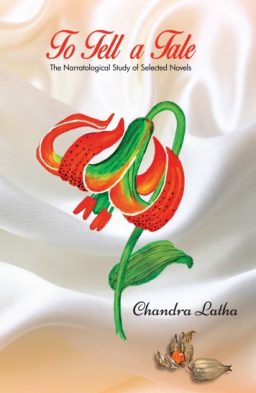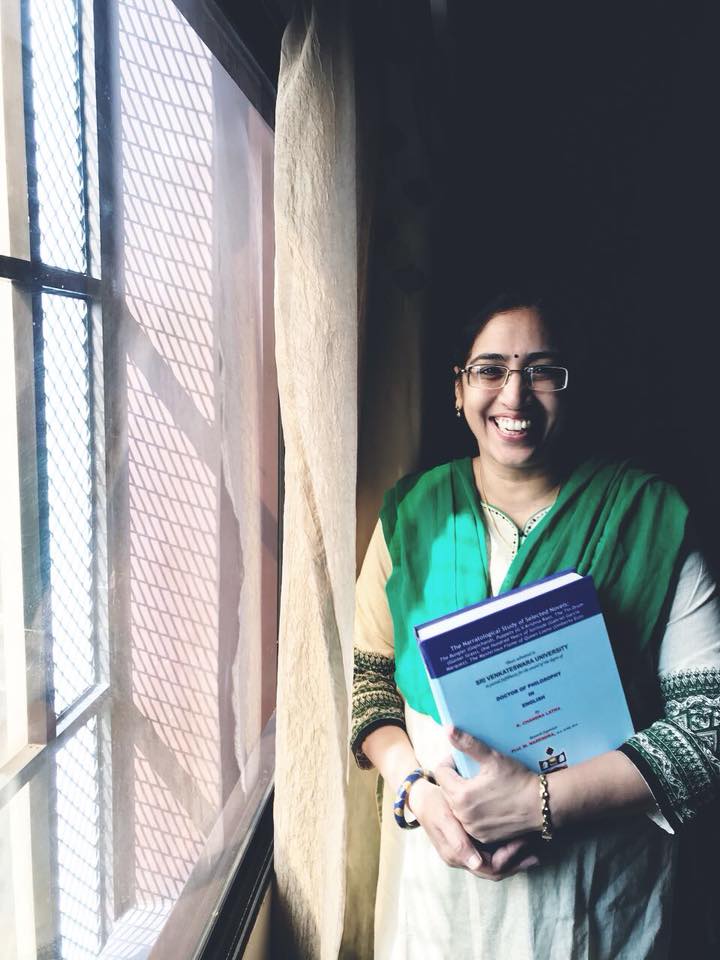
To tell a tale-3
-Chandra Latha
Chapter-I
(Part-2)
Narratology and Novel
This pioneering structuralism theory, distinctively developed, is based on the study of narrative in literature or Narratology.
However, Lévi-Strauss’s theory was pre-figured to the theoretical lineage to Aristotle, but modern narratology is agreed to have begun with the Russian formalist Valdamore Propp.
Since Aristotle plots of the narrative are supposed to have a beginning, middle, and end. Theorists describing a text’s narrative structure might refer to structural elements such as, an introduction, the story’s founding characters and circumstances followed by a chorus, which uses the voice of an onlooker to describe the events or indicate the proper emotional response to be happy or sad to what has just happened; and , a coda, which falls at the end of a narrative and makes concluding remarks.
Valdamore Propp (Valdamore Propp Morphology of the Folktale, 1928. Translated by Laurence Scott.. University of Texas Press. 1968, Pg.no.) reduced all the folktales into ‘seven sphere of action ‘and thirty one fixed elements or ‘functions’ (Terry Eagleton, Literary Theory: An Introduction. Oxford, BasilBlackwell. 1983. Pg.91) of narrative. The seven sphere of action are: (https://en.wikipedia.org/wiki/ Vladimir_Propp)
- The hero or victim/seeker hero — reacts to the donor, weds the princess.
- The villain — struggles against the hero.
- The princess or prize and her father — the hero deserves her throughout the story but is unable to marry her because of an unfair evil, usually because of the villain. The hero’s journey is often ended when he marries the princess, thereby beating the villain.
- The dispatcher — character who makes the lack known and sends the hero off.
- The (magical) helper — helps the hero in their quest.
- The donor — prepares the hero or gives the hero some magical object.
- The false hero — takes credit for the hero’s actions or tries to marry the princess.
These characteristic functions sometimes are distributed among different roles of the characters. Different characteristics or roles may be presented in one character.
According to Valdamore Propp, after the initial situation is depicted, the tale takes the following sequence of 31 fixed elements or functions:
- ABSENTATION: A member of a family leaves the security of the home environment. This may be the hero or some other member of the family that the hero will later need to rescue. This division of the cohesive family injects initial tension into the storyline. The hero may also be introduced here, often being shown as an ordinary person.
- INTERDICTION: An interdiction is addressed to the hero (‘don’t go there’, ‘don’t do this’). The hero is warned against some action (given an ‘interdiction’).
- VIOLATION of INTERDICTION: The interdiction is violated (villain enters the tale). This generally proves to be a bad move and the villain enters the story, although not necessarily confronting the hero. Perhaps they are just a lurking presence or perhaps they attack the family whilst the hero is away.
- RECONNAISSANCE: The villain makes an attempt at reconnaissance (either villain tries to find the children/jewels etc.; or intended victim questions the villain). The villain (often in disguise) makes an active attempt at seeking information, for example searching for something valuable or trying to actively capture someone. They may speak with a member of the family who innocently divulges information. They may also seek to meet the hero, perhaps knowing already the hero is special in some way.
- DELIVERY: The villain gains information about the victim. The villain’s seeking now pays off and he or she now acquires some form of information, often about the hero or victim. Other information can be gained, for example about a map or treasure location.
- TRICKERY: The villain attempts to deceive the victim to take possession of victim or victim’s belongings (trickery; villain disguised, tries to win confidence of victim). The villain now presses further, often using the information gained in seeking to deceive the hero or victim in some way, perhaps appearing in disguise. This may include capture of the victim, getting the hero to give the villain something or persuading them that the villain is actually a friend and thereby gaining collaboration.
- COMPLICITY: Victim taken in by deception, unwittingly helping the enemy. The trickery of the villain now works and the hero or victim naively acts in a way that helps the villain. This may range from providing the villain with something (perhaps a map or magical weapon) to actively working against good people (perhaps the villain has persuaded the hero that these other people are actually bad).
- VILLAINY or LACK: Villain causes harm/injury to family member (by abduction, theft of magical agent, spoiling crops, plunders in other forms, causes a disappearance, expels someone, casts spell on someone, substitutes child etc., commits murder, imprisons/detains someone, threatens forced marriage, provides nightly torments); Alternatively, a member of family lacks something or desires something (magical potion etc.). There are two options for this function, either or both of which may appear in the story. In the first option, the villain causes some kind of harm, for example carrying away a victim or the desired magical object (which must be then be retrieved). In the second option, a sense of lack is identified, for example in the hero’s family or within a community, whereby something is identified as lost or something becomes desirable for some reason, for example a magical object that will save people in some way.
- MEDIATION: Misfortune or lack is made known, (hero is dispatched, hears call for help etc./ alternative is that victimized hero is sent away, freed from imprisonment). The hero now discovers the act of villainy or lack, perhaps finding their family or community devastated or caught up in a state of anguish and woe.
- BEGINNING COUNTER-ACTION: Seeker agrees to, or decides upon counter-action. The hero now decides to act in a way that will resolve the lack, for example finding a needed magical item, rescuing those who are captured or otherwise defeating the villain. This is a defining moment for the hero as this is the decision that sets the course of future actions and by which a previously ordinary person takes on the mantle of heroism.
- DEPARTURE: Hero leaves home;
- FIRST FUNCTION OF THE DONOR: Hero is tested, interrogated, attacked etc., preparing the way for his/her receiving of a magical agent or helper (donor);
- HERO’S REACTION: Hero reacts to actions of future donor (withstands/ fails the test, frees captive, reconciles disputants, performs service, uses adversary’s powers against him);
- RECEIPT OF A MAGICAL AGENT: Hero acquires use of a magical agent (directly transferred, located, purchased, prepared, spontaneously appears, eaten/ drunk, help offered by other characters);
- GUIDANCE: Hero is transferred, delivered or led to whereabouts of an object of the search;
- STRUGGLE: Hero and villain join in direct combat;
- BRANDING: Hero is branded (wounded/marked, receives ring or scarf);
- VICTORY: Villain is defeated (killed in combat, defeated in contest, killed while asleep, banished);
- LIQUIDATION: Initial misfortune or lack is resolved (object of search distributed, spell broken, slain person revived, captive freed);
- RETURN: Hero returns;
- PURSUIT: Hero is pursued (pursuer tries to kill, eat, undermine the hero);
- RESCUE: Hero is rescued from pursuit (obstacles delay pursuer, hero hides or is hidden, hero transforms unrecognisably, hero saved from attempt on his/ her life);
- UNRECOGNIZED ARRIVAL: Hero unrecognized, arrives home or in another country;
- UNFOUNDED CLAIMS: False hero presents unfounded claims;
- DIFFICULT TASK: Difficult task proposed to the hero (trial by ordeal, riddles, test of strength/endurance, other tasks);
- SOLUTION: Task is resolved;
- RECOGNITION: Hero is recognized (by mark, brand, or thing given to him/her);
- EXPOSURE: False hero or villain is exposed;
- TRANSFIGURATION: Hero is given a new appearance (is made whole, handsome, new garments etc.);
- PUNISHMENT: Villain is punished;
- WEDDING: Hero marries and ascends the throne (is rewarded/promoted).
Occasionally, some of these functions are inverted, as when the hero receives something whilst still at home, the function of a donor occurring early. More often, a function is negated twice, so that it must be repeated three times in Western cultures.
Propp’s suggestions of distinctive narrative functions inspired scholars to find common Narrative structures to understand the narratological development of a discourse.
According to Jonathan Culler (2001) narratology comprises many strands implicitly united in the recognition that narrative theory requires a distinction between story, a sequence of actions or events conceived as independent of their manifestation in discourse, and discourse, the discursive presentation or narration of events.’ (Jonathan Culler, The Pursuit of Signs: Semiotics, Literature, Deconstruction, Routledge Classics ed. (London: Routledge, 2001. Pg.189)
But, A.J. Greimas, aims at a universal grammar of narrative by attempting a semantic analysis of sentence structure. In place of spheres of action, he proposes Actant, a structural unit, which is not even character or narrative.
*****
(Contd..)

Chandra Latha, writer from Nellore won Telugu Association of North America award in 1997 for the novel “Regadi vittulu”. Her other novels are Vardhani(1995) and Vallu veellu paarijaataalu (2011). Her short fiction includes nearly 80 stories compiled in nenu nanna navutha (1996),Idam shareeram (2003) and vivarnam(2007). Her non-fiction are (Fish can fly!) ”vacche daretu(2010), itanala kadaku eeboothi boTlu(2010). And also published her blogposts in a book madata pejee(2010).
